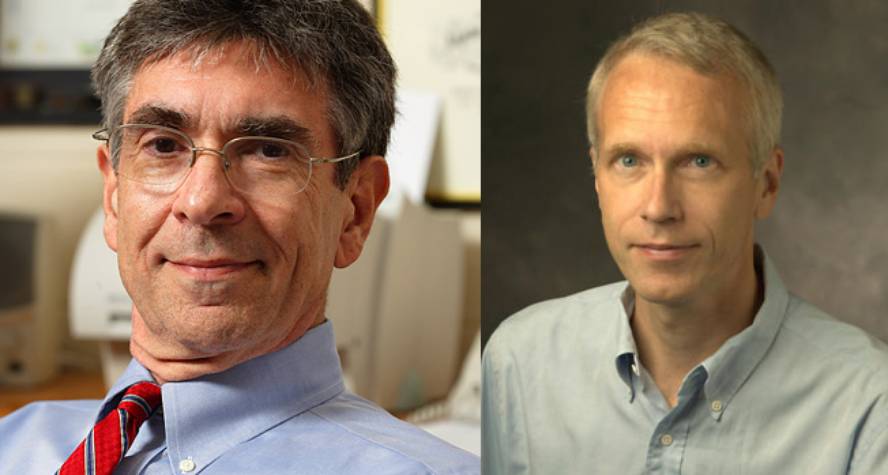Robert Lefkowitz and Brian Kobilka are 2012 Nobel Prize in Chemistry

“G-protein coupled receptors” are a family of receptors that relate the cell to the medium. They are found on the surface of cells and through these receptors G proteins initiate a chain reaction.
Adrenaline receptors such as light, taste and smell belong to this family. Coupled G-protein receptors intervene in many physiological processes and almost half of the drugs we use this mechanism, among others, beta blockers so common in the treatment of heart disease.
Robert J has studied medicine. Lefkowitz and Brian K. Cuchara and the two wanted to be doctors, but research has led them through other ways. Lefkowitz graduated during the Vietnam War and served his military service at the U.S. Health Institute. They challenged him to find adrenaline receptors and there he began his research career. This is a multi-year work that after being transferred to Duke University discovered receptors by binding radioactive isotopes to certain hormones, including adrenaline drinkers. He and his teammates pulled the receiver out of the cell and began to learn how it worked.
Adrenaline excites the heart with beta receptors and scientists have spent decades searching for these receptors. In studies conducted in the 1940s, American Raymond Ahlquist concluded that jealousy should have two types of adrenaline receptors: alpha, responsible for contraction of muscle cells in blood vessels, and beta, which excited the heart. But he could not find himself and came to despair: “They are abstract concepts for me, designed to explain the answers observed in the tissues,” he wrote.
Teacher and student together
Lefkowitz and Kobilka joined Duke University. Kobilka joined the group formed by Lefkowitz in the 1980s, when the group began working on the search for the beta receptor gene. Therefore, Kobilka will receive this year the Nobel Prize in Chemistry.
The cave was fascinated by adrenaline receptors, the result of his experience as an intensive care physician, in which he had seen that the difference between death and life could depend on a dose of epinephrine. Epinephrine opens the airways and accelerates the heart, a capacity that wanted to learn all the molecular details.
The cave was able to identify and isolate itself in the beta receptor gene, and from that discovery came another. The study of the gene code revealed that another very similar receptor structure was known, one found in the eye: the rhodopsin receptor of light.
From this discovery, the working group formed the puzzle: they knew that adrenaline receptors and rhodopsin interacted with each other with G proteins and knew 30 other receptors that worked through these proteins (they also found G proteins at the time when Lefkowitz isolated the beta receptor and received the 1994 Medical Novel). Lefkowitz then remembers as “Eureka momentua”: they were before a whole family of similarly looking receptors that function similarly.
They are the family of G-protein coupled receptors, fundamental in the interaction between the cell and the medium.





